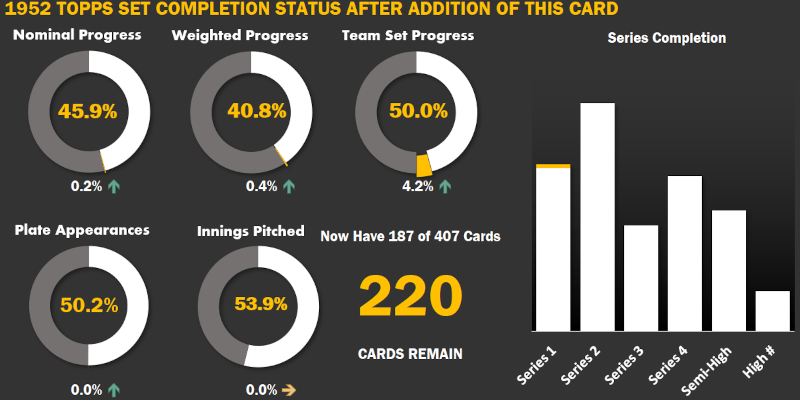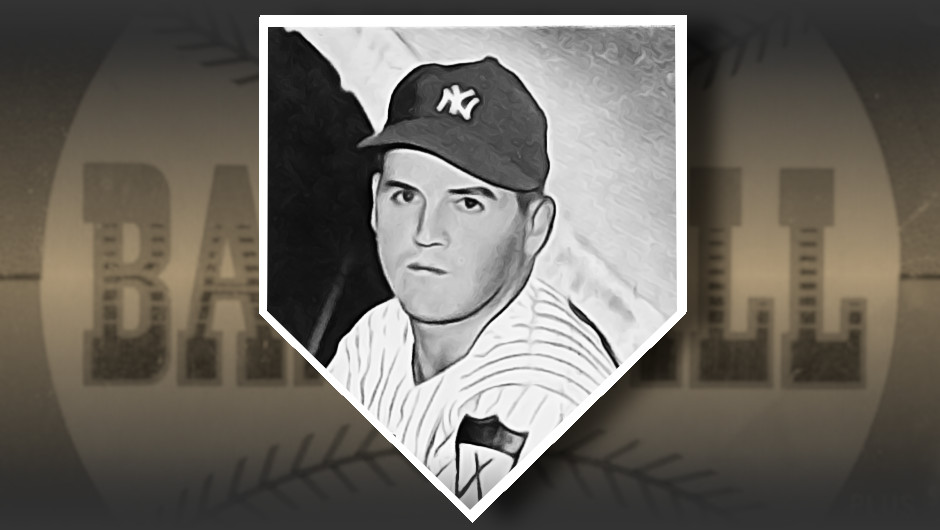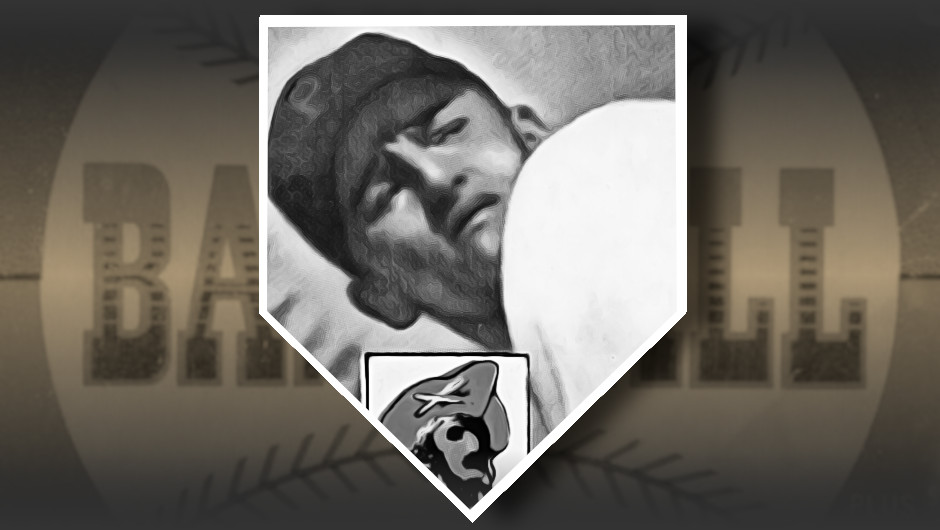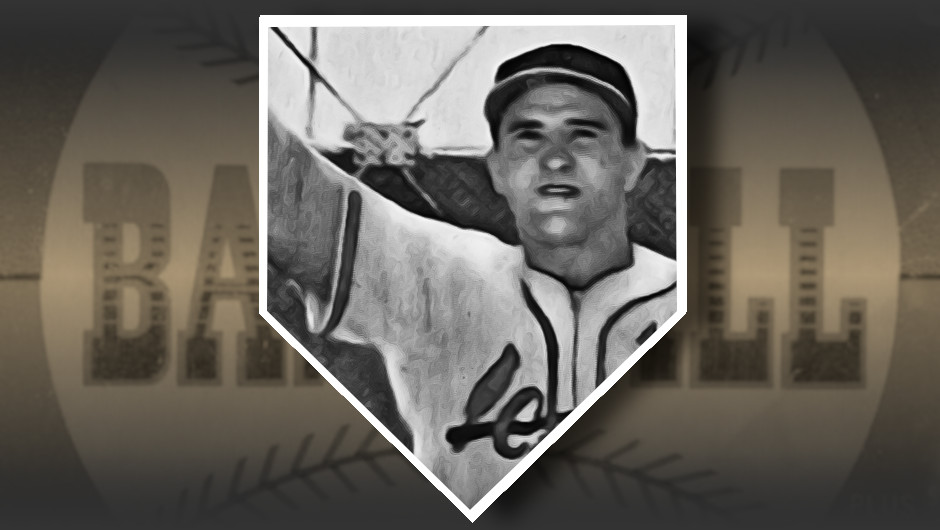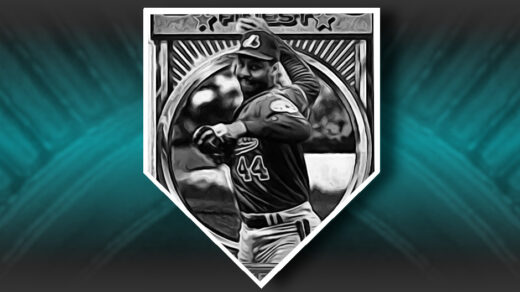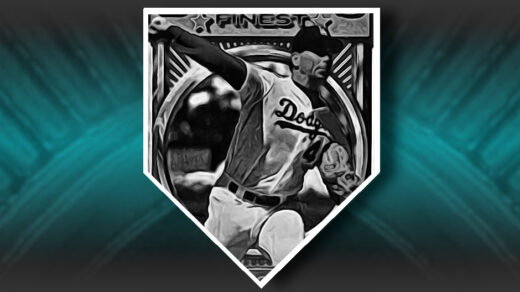Johnny Bucha’s final MLB season came and went with a team that finished more than 40 games out of first place in the American League. He appeared in less than half of those contests, spending most of his time warming up a hopelessly overworked bullpen staff. Despite this, there were baseball fans in Detroit eagerly searching for the only baseball card that would carry his picture in 1953.
That was the year that Glendale Meats included a card in every pack of hot dogs produced by the Detroit based firm. Bucha was one of 28 players in the issue, all of which were members of the local Tigers squad. Unlike many regional food producers conducting baseball card promotions, Glendale’s design team seemed to truly embrace quality in their cards. While Topps was just getting started with very brief statistical tables on card backs, Glendale put exstensive major and minor league records on their cards. Bucha’s card shows every year and level of his play going back a decade.
The photos are much more crisp and interesting than competing products. Bucha’s card shows him standing along the right field line of a ballpark, likely at the edge of a bullpen where he had been working. He is pictured in a Detroit uniform, a team he had just joined for the ’53 season. This isn’t an image that has been touched up to artificially put in him Detroit colors, it is an actual photo taken at the first opportunity in the same year the card was issued. He’s wearing no pads, no mask, and has only his catcher’s mitt against the backdrop of outfield advertisements. The ads and 330′ sign on the foul pole show the stadium in which he stands is not Tiger Stadium, but rather Henley Park in Lakeland, Florida. Glendale’s card team thought enough of this project to actually acquire current photographs of the team.
Though it consists of a small checklist, this is an exceptionally difficult set to put together. Limited geographic distribution and the fact that cards were packed inside packages of hot dogs leave few surviving copies. Contributing to this shortage is the contest taking up the bottom quarter of the back of each card. Hot dog aficionados who assembled the entire set and turned them in to Glendale HQ could win tickets to the upcoming ’53 World Series. Winners would be determined by who turned in the most cards, incentivising the most aggressive collectors to relinquish the largest hoards of cards. A lot of hot dogs were consumed in the chase to build these sets (1 set=224 hot dogs if no cards are duplicated in the search). In the end, six fans who gathered a bunch of Bucha cards and other Tigers were sent to New York to watch the Yankees and Dodgers fight for the title.
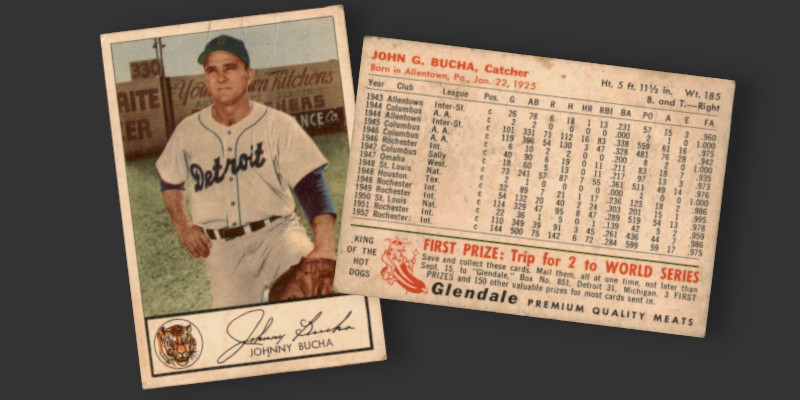
Despite spending a decade in the Cardinals’ minor league system, Bucha never saw much playing time at the top level. He got into just 2 contests in 1948, less than two dozen games in 1950 (despite being on the MLB roster the entire season), and then wrapped it up with 60 games for Detroit in 1953. Not all of these appearances were lengthy as a good number were actually just single at-bat pinch hitting duty for departing pitchers. He had a negative career WAR after showing some serious farm club hitting talent (.388 average in 1944).
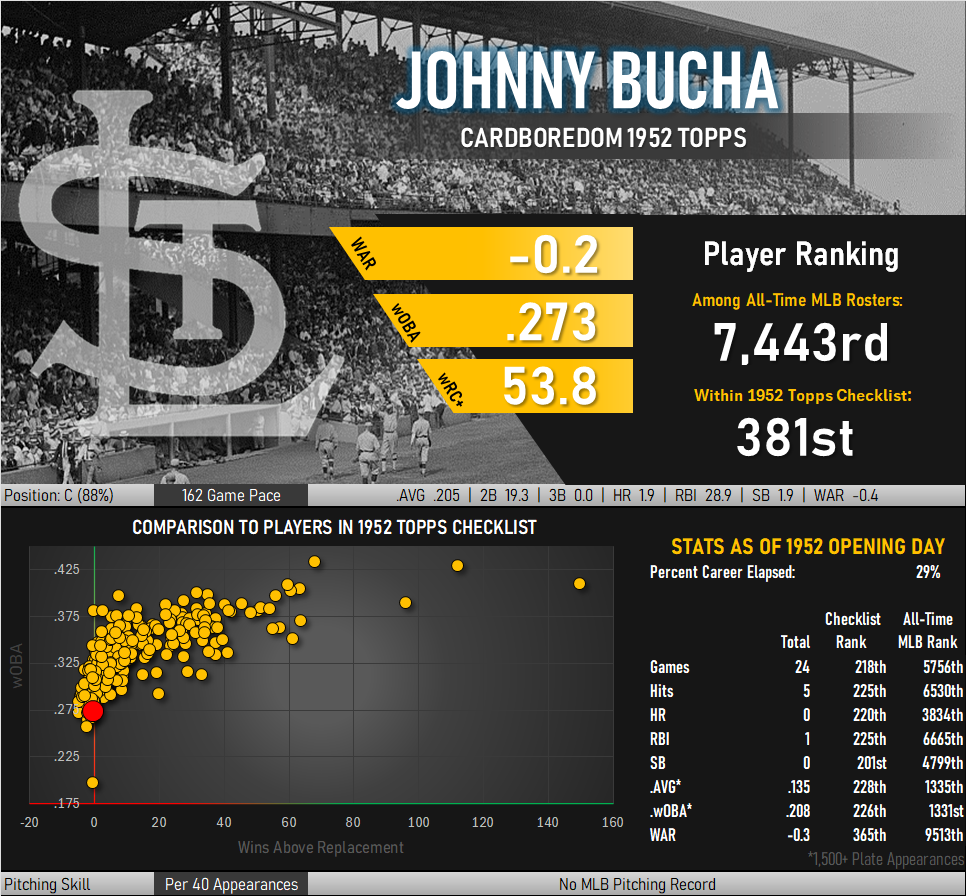
Johnny Bucha in 1952 Topps
Bucha’s rookie card in ’52 Topps doesn’t do anything to avoid bullpen catcher vibes. He’s in a catching crouch, but has no protective padding other than his mitt. His cap is facing forwards, indicating no recent discarding of a mask. The high wall and chain link fencing behind him all but scream bullpen.
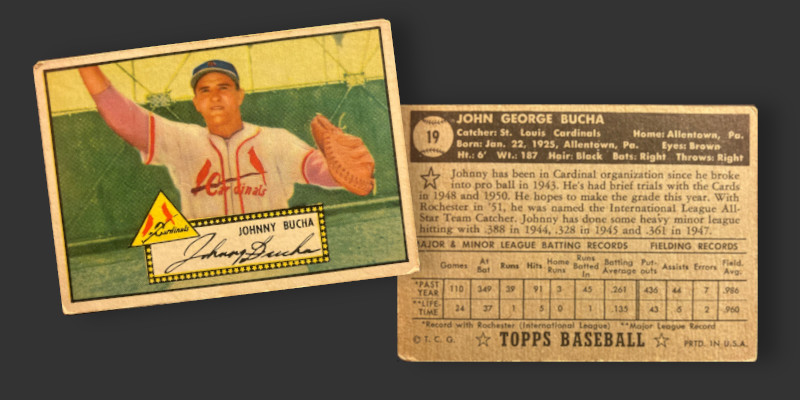
You know what? The bullpen is just fine. This card works. It captures the player and does so in an aesthetically pleasing card. It’s a posed shot of a stationary player that still manages to convey motion with his raised right arm. The slope of his arms and shoulders is echoed by the sloping nature of the facsimile signature. The pink undershirt is probably incorrectly colored, but the pastel hue still manages to give a whiff of springtime when combined with the light yellow background.
